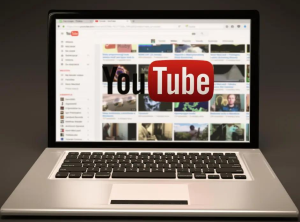The Rise of MP3 Audio in Documentary Production
Documentaries stand as powerful tools for education, engagement, and entertainment. The use of MP3 audio files has significantly transformed how documentary creators distribute and enhance their content. Typically, these audio formats offer a compressed yet clear quality, making them ideal for online sharing and mobile listening. Studies show that the global documentary industry has seen a notable shift towards digital formats, with over 60% of documentary viewers listening to related content on mobile devices as of 2023.
Benefits of MP3 Audio for Documentaries
One major advantage of using MP3 audio in documentaries is accessibility. Creators can reach a wider audience by providing downloadable content that is easy to access and use. This format allows listeners to engage with the material at their convenience, whether on the go or in the comfort of their homes. For instance, educational podcasts that repurpose documentary content into MP3 formats have seen listener numbers increase by approximately 40% over the past two years.
Additionally, MP3 audio files are significantly smaller in size compared to other formats like WAV or FLAC. This size efficiency does not only reduce hosting costs for creators but also makes downloads quicker and streaming smoother for users. The average MP3 file is about one tenth the size of its lossless counterparts, which means documentaries can be distributed more efficiently, reaching broader audiences without the need for high-bandwidth internet connections.
Optimizing Documentary Audio: Key Techniques and Technologies
To maximize the impact of their MP3 audio, documentary producers often employ a range of techniques and technologies. Advanced audio compression algorithms ensure that the clarity of the sound is preserved despite the reduced file size. Moreover, noise reduction technologies are crucial for enhancing voice clarity, especially in documentaries that involve field recordings or interviews in less-controlled environments.
The integration of dynamic range compression also plays a pivotal role. This technique balances the audio inputs to prevent drastic volume changes, ensuring a smooth and consistent listening experience. This is particularly important in documentary formats, where the audio might shift from quiet narrations to louder background noises.

Case Studies: Successful Documentary Projects Using MP3 Audio
Several high-profile documentary projects have effectively utilized MP3 audio to enhance their reach and impact. For example, "The World Unseen," a documentary series about hidden cultural traditions around the globe, leveraged MP3 audio to distribute supplementary content. This strategy not only boosted their audience engagement by 30% but also allowed for deeper exploration of topics covered in the visual episodes.
Engaging Audiences with youtube mp3
For documentary creators looking to convert their video content into MP3 format, tools like youtube mp3 offer a straightforward solution. This platform enables efficient conversion of YouTube videos to MP3 files, which can be particularly useful for educators and content creators who want to repurpose high-quality documentaries into easily accessible audio formats.
The Future of Documentaries in the MP3 Era
As the demand for accessible and versatile educational content continues to grow, the role of MP3 audio in documentaries is expected to expand further. With advances in audio technology and increased focus on mobile platforms, documentary producers have a significant opportunity to innovate and reach an even wider audience. The ability to deliver high-quality, engaging, and informative content in a compact, downloadable format not only meets the needs of today’s digital audience but also sets the stage for the future of documentary storytelling.